If you're looking for a homemade cheese sauce, I've got you covered with this simple Low Calorie Cheese Sauce. It's made with just a handful of ingredients with a fraction of the fat.
Check out my Low Calorie Pinwheels and my Low Calorie Protein Shake for more amazing low calorie recipes!
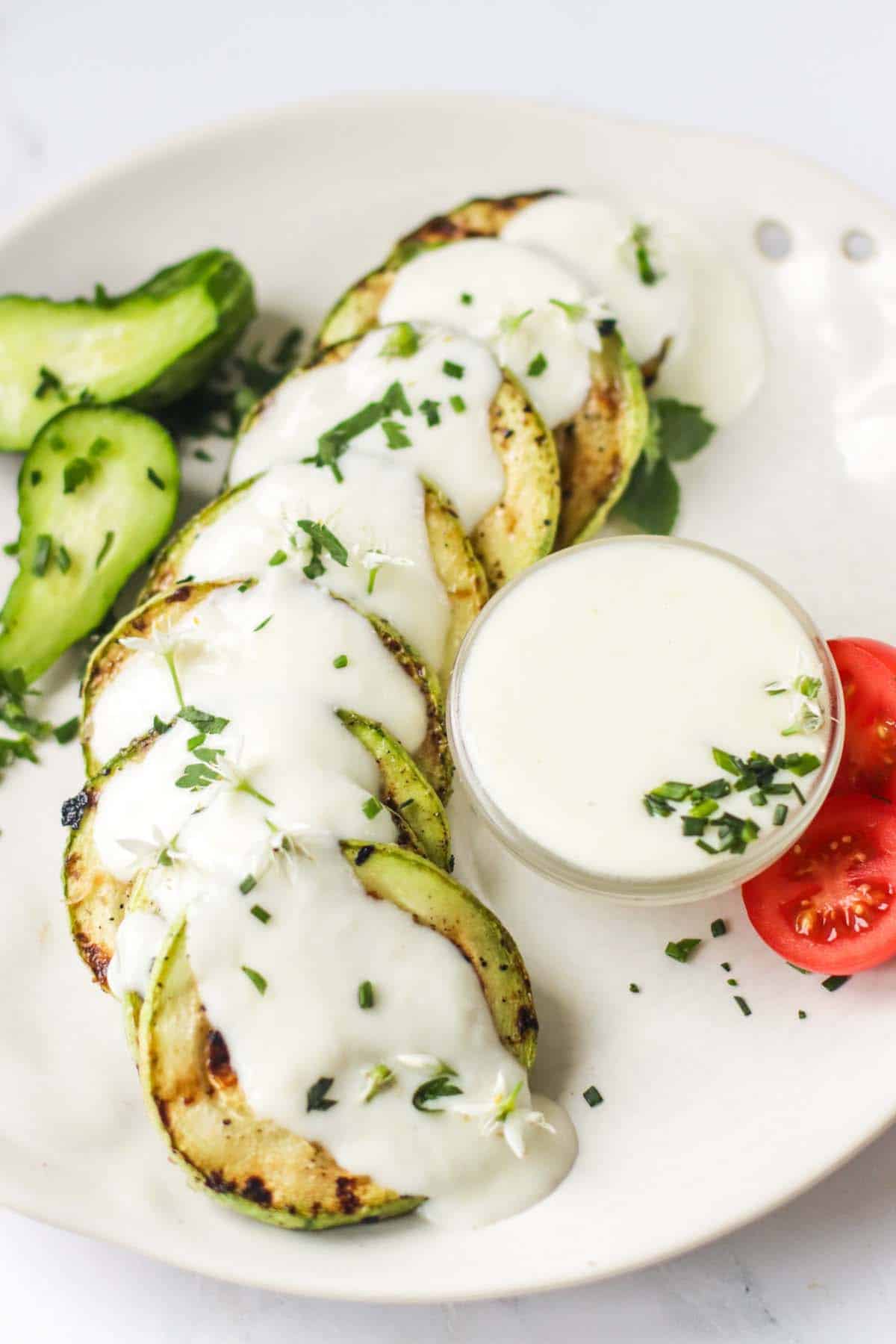
Jump to:
This low calorie cheese sauce recipe is an amazing cheesy sauce that tastes like the real thing. The next time you're looking for a great recipe to make a low calorie mac or a broccoli cheese casserole, give this creamy cheese sauce a try!
This sauce is light without the need for all-purpose flour, heavy cream, cream cheese or full fat ingredients. It's easy to make your own cheese sauce that tastes like any traditional recipe.
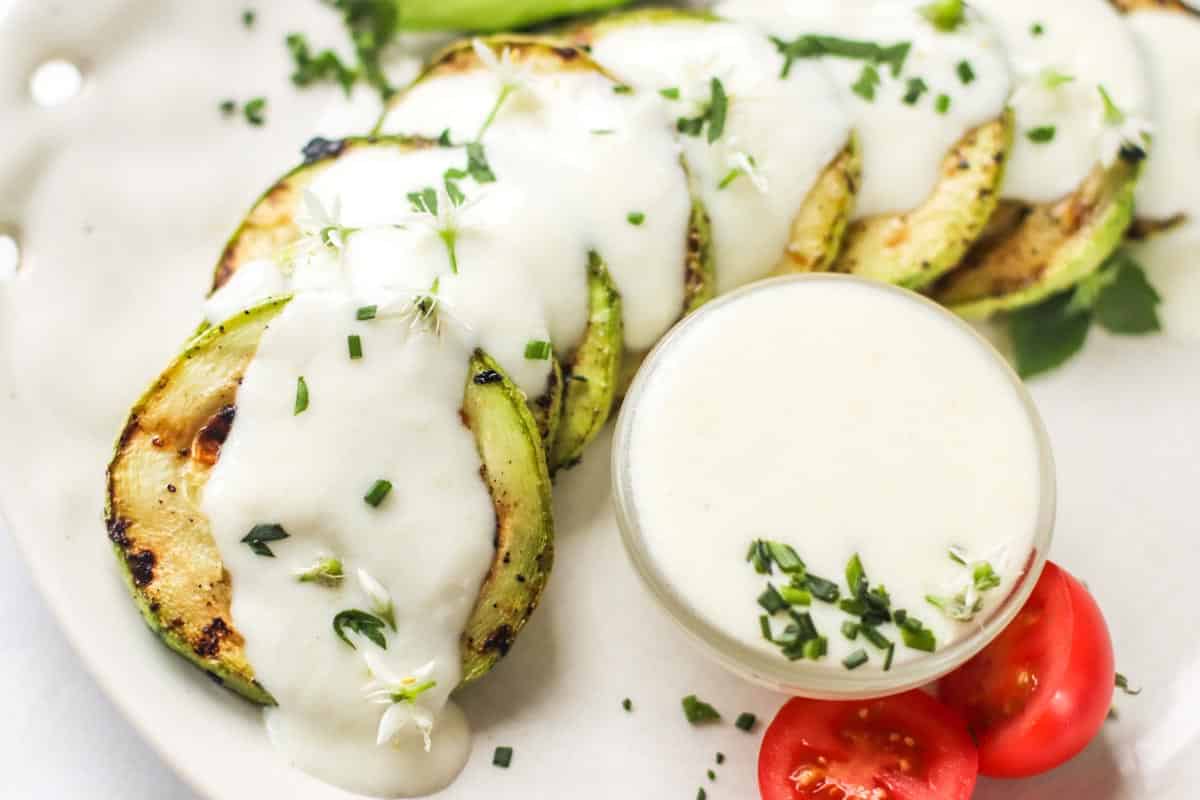
Why You'll Love This Recipe
This light cheese sauce recipe is the best part of your meal, but with a fraction of the calories. With detailed instructions and simple ingredients, you'll find everything you need to make this recipe at the grocery store.
This cheese recipe is great as a nacho cheese sauce, with macaroni cheese or a dip for soft pretzels and tortilla chips.
Ingredients You Need
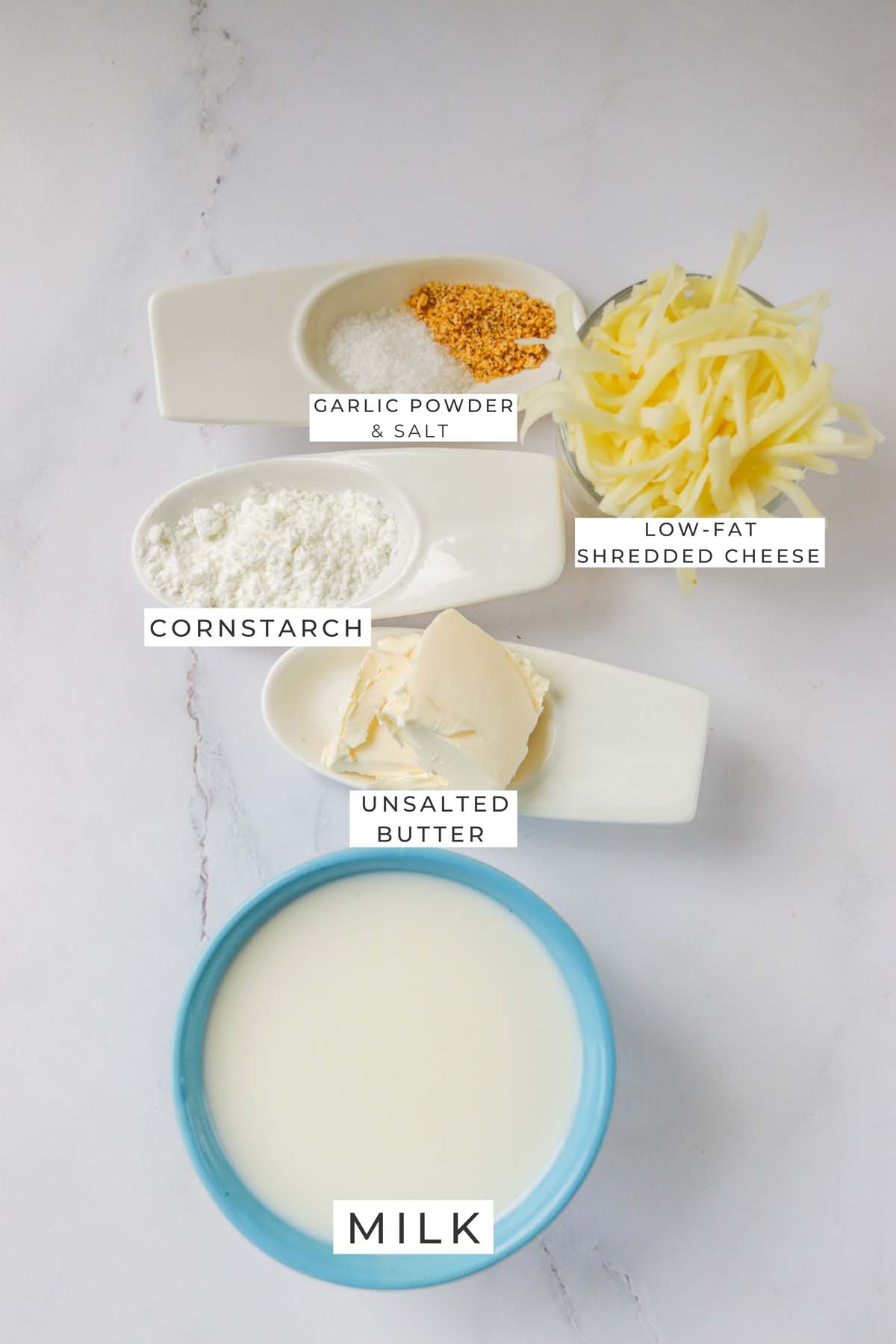
- Cornstarch: Forms a slurry with milk, helping the sauce achieve its ideal consistency.
- Skim milk: Brings a rich texture without the calorie load. You can also use almond milk.
- Garlic powder: Brings depth and aroma to the sauce.
- Low fat shredded cheese (sharp cheddar, mozzarella, or your preferred cheese): Low fat shredded cheese brings that classic cheese flavor.
- Unsalted butter: Gives a velvety finish to the sauce.
- Salt & black pepper: These classic seasonings bring balance to the sauce.
Step By Step Photos
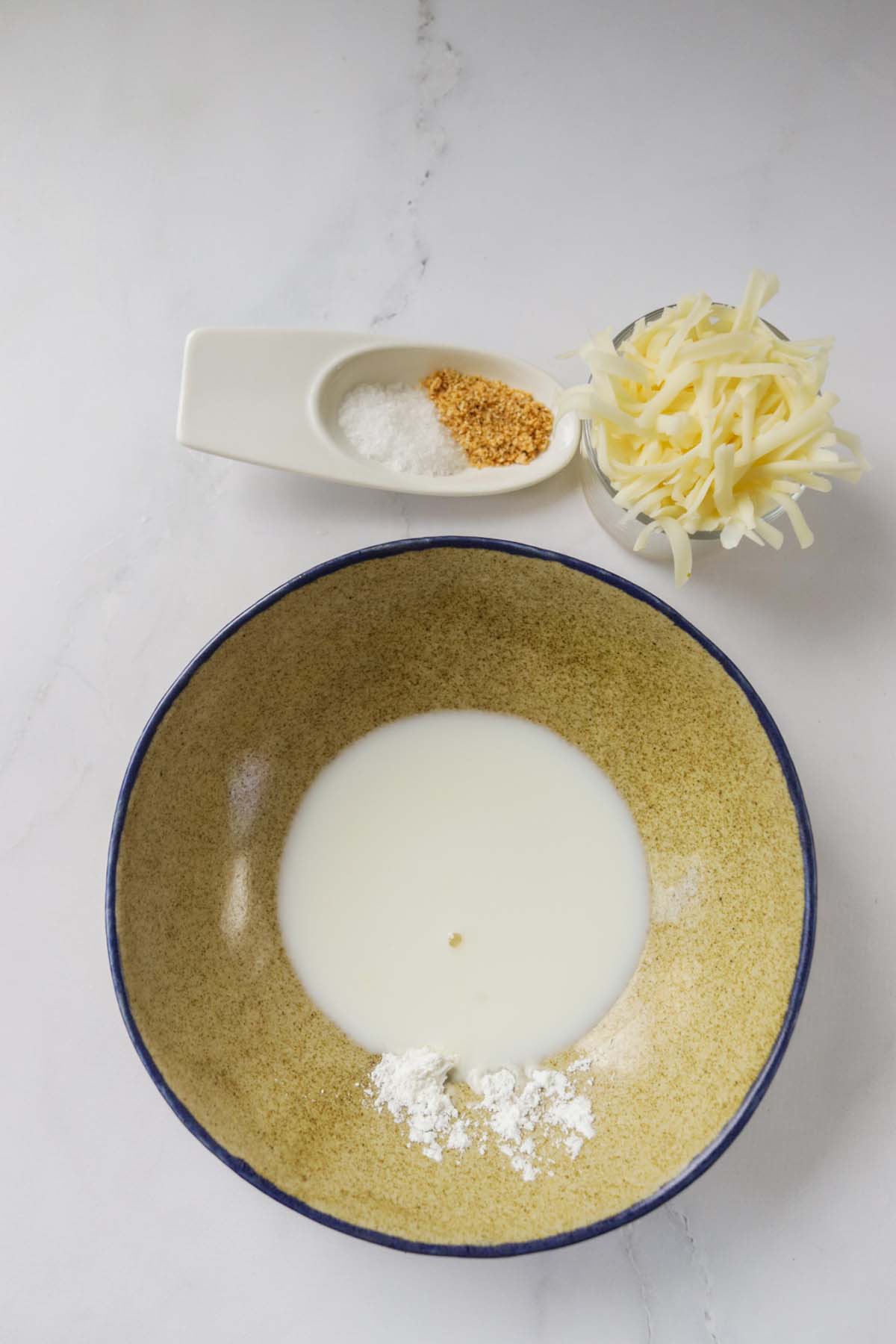
Mix the cornstarch milk.
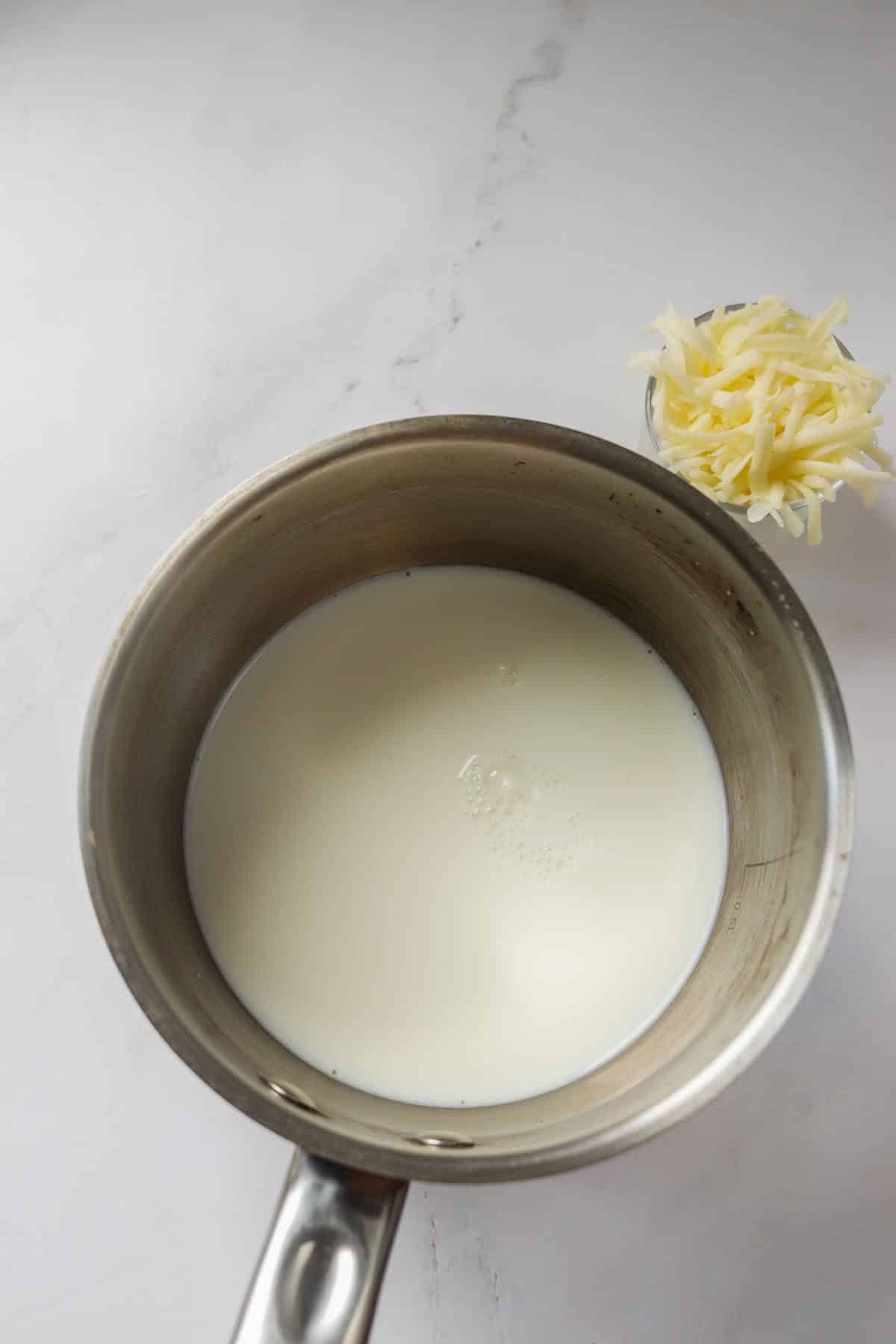
Heat milk over medium-low heat.
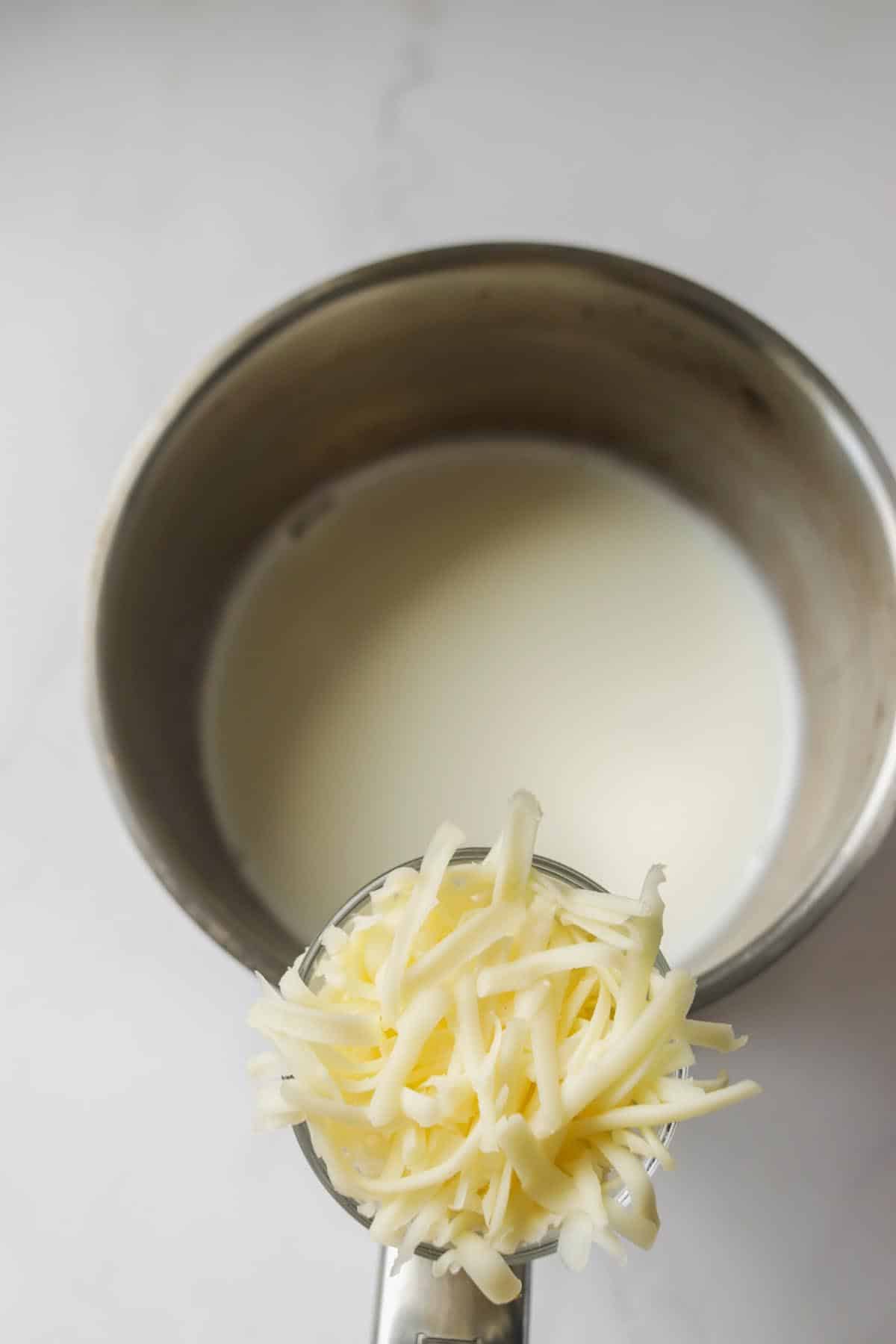
Add shredded cheese to saucepan.
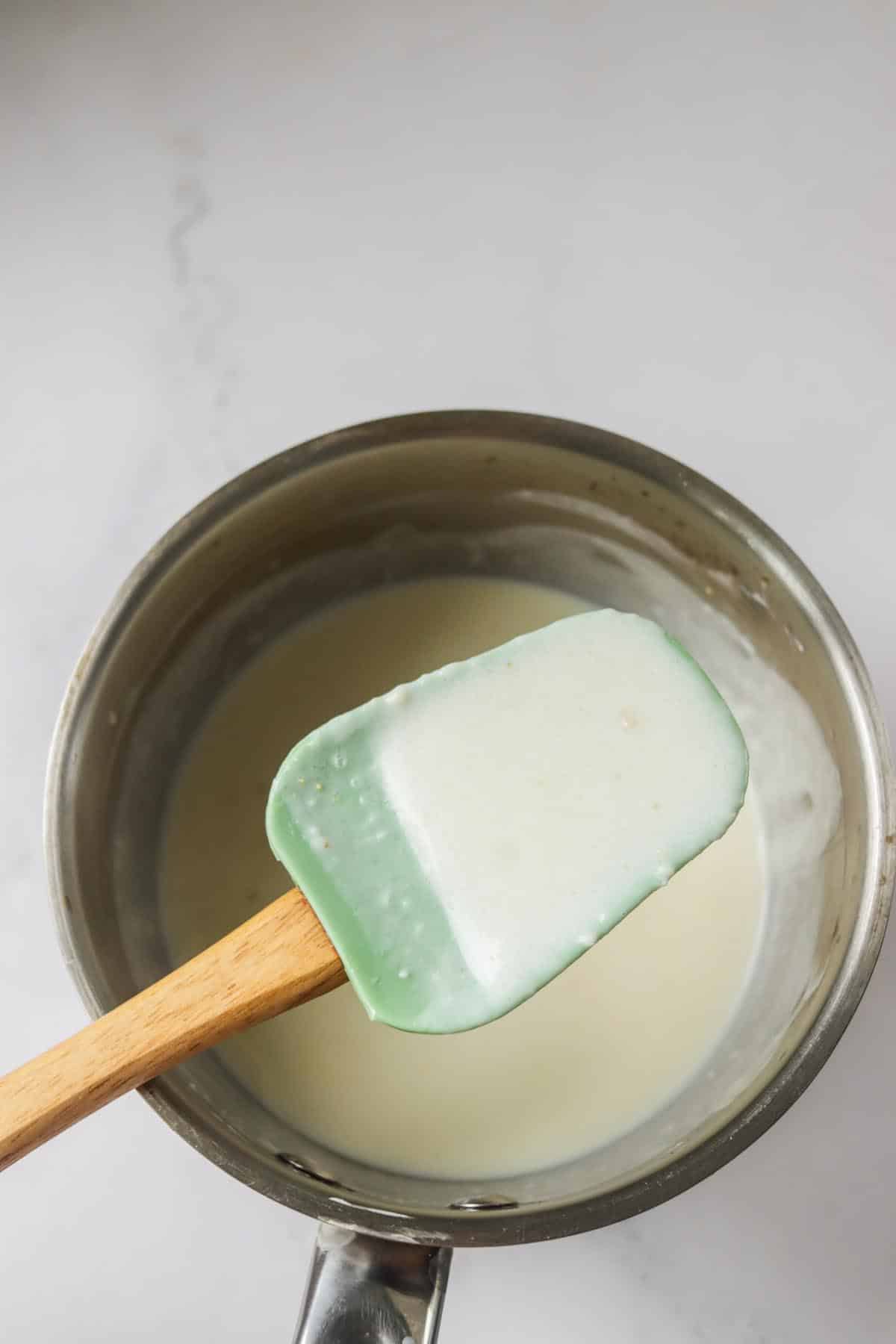
Season the cheese sauce.
How To Make Cheese Sauce From Scratch
Step 1: Prepare cornstarch slurry: In a small bowl, mix the cornstarch with a couple of tablespoons of milk until it forms a smooth slurry.
Step 2: Heat milk: In a large saucepan, heat the remaining milk over medium-low heat. Add the garlic powder to the milk.
Step 3: Thicken sauce: Gradually whisk in the cornstarch slurry into the milk while stirring constantly. Keep stirring until the mixture begins to thicken slightly.
Step 4: Add cheese: Add the shredded cheese to the saucepan, a small handful at a time. Stir until each addition is fully melted before adding more.
Step 5: Optional butter: Add the unsalted butter to the sauce and stir until it's fully melted.
Step 6: Seasoning: Season the cheese sauce with salt and pepper, to taste.
Step 7: Serve: Once the cheese has melted completely and the sauce is smooth, remove the saucepan from the heat.
NOTE: You can print the FULL recipe with all ingredients & detailed instructions below!
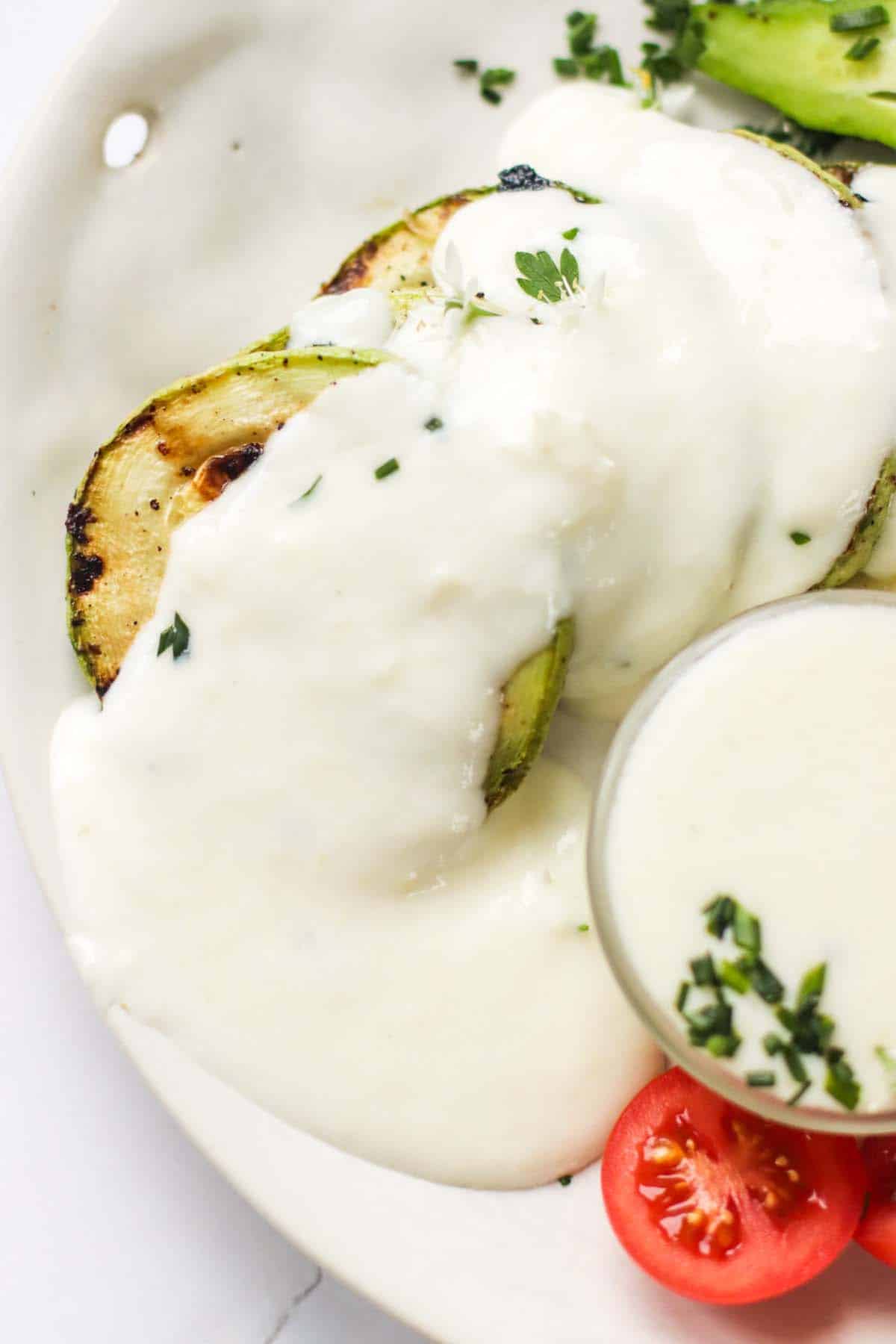
Tips
- When heating the milk, go for a gentle, medium-low heat. Avoid rapid boiling to prevent curdling.
- Add the shredded cheese in small handfuls. Be sure each batch is fully melted before adding more. This technique prevents clumping.
- If the sauce becomes too thick, you can thin it out with a bit of additional milk. If it's too thin, simmer gently to reduce and thicken.
- Blend cooked and pureed cauliflower, carrots, or butternut squash into the cheese sauce. This adds volume and creaminess.
- Replace a portion of the milk with plain non-fat Greek yogurt. This adds protein and tanginess.
- Add finely chopped fresh herbs like basil, thyme, or chives to the sauce.
Frequently Asked Questions About Cheese Sauce
Yes, the best thing is you can experiment with different low fat cheese varieties, like Swiss, provolone, or cheddar.
Pair it with your warm dips, poured over whole wheat pasta, or even use it as the base for an easy mac and cheese.
Allow the cheese sauce to cool completely before transferring it to an airtight container. Store it in the refrigerator for up to 3-4 days.
Cool the cheese sauce to room temperature before freezing. Divide the sauce into portion sized containers and be sure they are airtight to prevent freezer burn. The sauce can be frozen for up to 2-3 months.
More Low Calorie Recipes You'll Love

Low Calorie Cheese Sauce
Ingredients
- 1 tablespoon cornstarch
- 1 cup low fat milk
- ½ teaspoon garlic powder
- 1 cup low-fat shredded cheese (cheddar, mozzarella, or your preferred cheese)
- 1 tablespoon unsalted butter
- Salt and pepper, to taste
Instructions
- In a small bowl, mix the cornstarch with a couple of tablespoons of milk until it forms a smooth slurry.
- In a large saucepan, heat the remaining milk over medium-low heat. Add the garlic powder to the milk.
- Gradually whisk in the cornstarch slurry into the milk while stirring constantly. Keep stirring until the mixture begins to thicken slightly.
- Add the shredded cheese to the saucepan, a small handful at a time, and stir until each addition is fully melted before adding more.
- Add the unsalted butter to the sauce and stir until it's fully melted.
- Season the cheese sauce with salt and pepper, to taste.
- Once the cheese has melted completely and the sauce is smooth, remove the saucepan from the heat.
Notes
- When heating the milk, go for a gentle, medium-low heat. Avoid rapid boiling to prevent curdling.
- Add the shredded cheese in small handfuls and be sure each batch is fully melted before adding more. This technique prevents clumping.
- If the sauce becomes too thick, you can thin it out with a bit of additional milk. If it's too thin, simmer gently to reduce and thicken.
- Blend cooked and pureed cauliflower, carrots, or butternut squash into the cheese sauce. This adds volume and creaminess.
- Replace a portion of the milk with plain non-fat Greek yogurt. This adds protein and tanginess.
- Add finely chopped fresh herbs like basil, thyme, or chives to the sauce.
- Storing: Allow the cheese sauce to cool completely before transferring it to an airtight container. Store it in the refrigerator for up to 3-4 days.
- Freezing: Cool the cheese sauce to room temperature before freezing. Divide the sauce into portion sized containers and be sure they are airtight to prevent freezer burn. The sauce can be frozen for up to 2-3 months.
Nutrition
All nutritional information is based on third-party calculations and should be considered estimates. Actual nutritional content will vary with brands used, measuring methods, portion sizes and more.



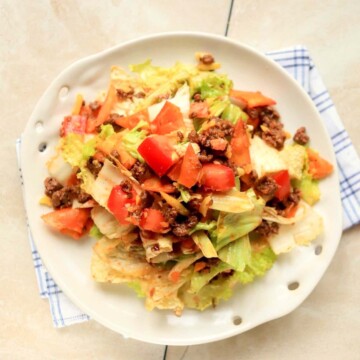
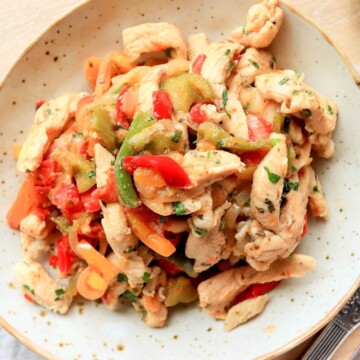
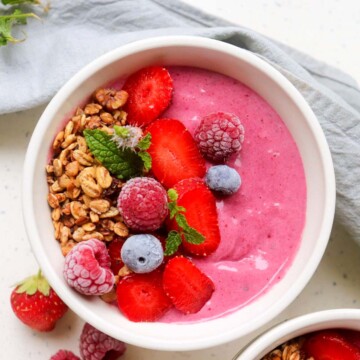
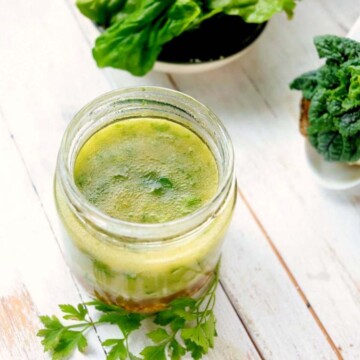
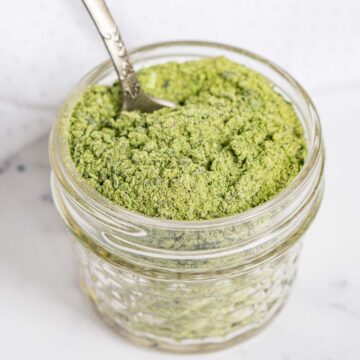
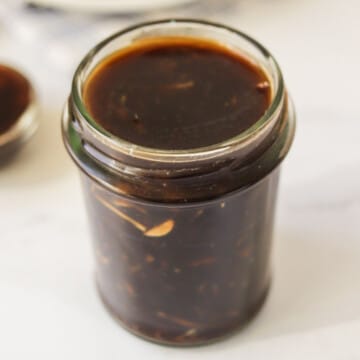
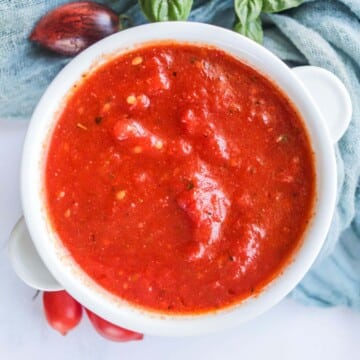
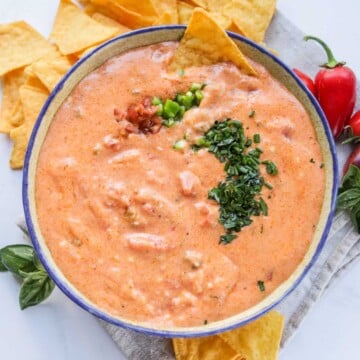
Comments
No Comments